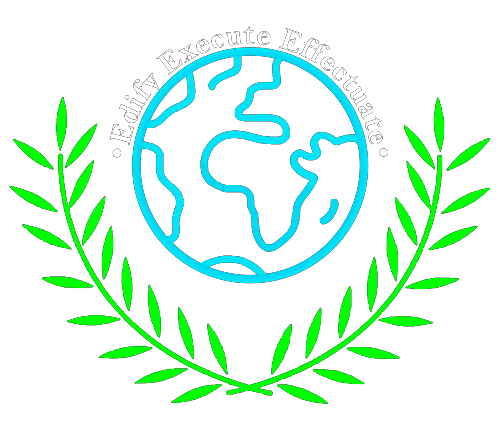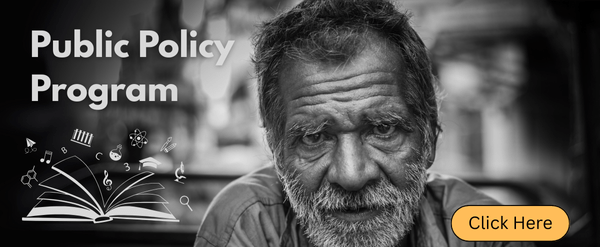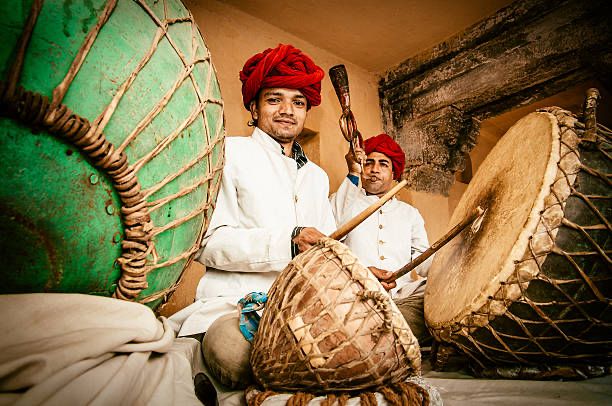Authors:
Debolina Bhattacharyya,
Sweta Tevatia,
Akshatha Allen. G
ABSTRACT:
India has long used its rich cultural heritage to project soft power through cultural diplomacy. However, traditional cultural exports like Bollywood and classical arts often reinforce stereotypes or fail to engage global audiences fully. In this regard, the economic potential of the informal music sector remains untapped within the cultural diplomacy framework. Strengthening policy support, improving financial aid and institutional backing, as well as leveraging informal musicians as cultural ambassadors can bolster India’s soft power, much like K-pop has for South Korea. This paper recommends policy interventions such as formal industry recognition, intellectual property protections, and international collaborations to ensure that India’s informal music sector becomes a driving force in public diplomacy and global cultural exchange.
KEYWORDS:
Cultural diplomacy, diaspora diplomacy, non-state actors, informal music sector, concert economy, soft power
INTRODUCTION:
Culture has become a critical asset in global politics. Nations seek to cultivate positive international perceptions and build alliances through non-coercive means termed as ‘soft power’ (Nye, 2004). According to Thussu (2013), “Culture” is one of India’s most effective soft power brands, projecting itself as a culturally diverse and inclusive country by drawing upon its pluralistic ethos. India has increasingly leveraged its visual and performing arts to strengthen bilateral relations through shared cultural experiences (Kumar & Mandal, 2019). Bollywood films, classical music and dance, the art and spirituality of ancient India to contemporary visual arts have become pivotal in shaping India’s international image and enhancing its diplomatic reach. (Kapur, 2020).
However, these cultural exports have resulted in stereotyping and representational complexities on the global stage. Bollywood often focuses more on entertainment and spectacle which can perpetuate stereotypes and offer a narrow view of Indian life (Gopal & Moorti, 2008). The narrative devices used by Indian films to project the Indian slum as the symbol of authentic India, has led to the growing popularity of “poverty tourism”, presenting a monolithic version of the country for global consumption (Dasgupta & Clini, 2023). Indian classical music, often involving strict technical rules, is not easily understood by international audiences (Majumdar & Chakravarty, 2017).
The solution is a new cultural export, an overlooked sector of the Indian media industry- the informal music sector. The market size of this sector ranges between ₹1 trillion and ₹5 trillion, dwarfing the formal music industry’s valuation of ₹18.7 billion (Kedia et.al., 2022). Even sub-groups such as brass bands or DJs partially provide greater employment opportunities than absorbed by the railways (1.25 million) or the Indian government (3.5 million). Consequently, India must empower its informal music sector to challenge stereotypes and project a modern, evolving national identity.
A NEW FRONTIER FOR CULTURAL DIPLOMACY:
According to Ian Hall, since 2000, five new developments can be identified in what he terms as a “new Indian public diplomacy”: efforts to showcase and “nation-brand” India (Hall, 2012). The Indian Council for Cultural Relations (ICCR), was established in 1950, “to establish, revive and strengthen cultural relations and mutual understanding between India and other countries” (ICCR, 2016).
The term “Cultural diplomacy” was coined by Milton Cummings as “the exchange of ideas, information, values, systems, traditions, beliefs, and other aspects of culture to foster mutual understanding”(Mulcahy, 1999). Villanueva Rivas (2010) analyzes cultural diplomacy through the theory of “cosmopolitan constructivism”, defining it as an “inter-subjective construction of ideas, norms and identities towards cooperation, welfare and understanding.” The United Nations Charter defends this theory in Article 1.2, stating one of its priorities as “to develop friendly relations among nations based on respect for the principle of equal rights and self-determination of peoples, and to take other appropriate measures to strengthen universal peace.
Music is now at the center of international diplomacy. The global music industry generates wealth for several allied sectors. As of 2023, India is the 14th largest global music market and with 450 million Indians under the age of 30, the subcontinent’s pop culture is on the rise. Listeners are increasingly engaging with the next generation of independent Indian music stars and are stepping away from Bollywood music. However, in comparison to countries such as the US or the UK, India’s infrastructural support for its music industry is underdeveloped. The informal sector, especially, presents unexplored economic potential, development of which is essential not just for India’s public policy framework but also to strengthen its bilateral relations.
DEVELOPMENT OF INFORMAL MUSIC SECTOR:
The music industry in India has not realized its potential due to the value gaps in the transforming industry owing to consumer underpayment, rampant piracy, and the absence of an effective national policy and regulatory framework. It remains on the periphery of the overall economic agenda of the country.
There is no intergovernmental understanding of the complete, holistic, transformative power of music. Recognition exists through programs like UNESCO’s Cities of Music, but these are isolated examples, not a holistic, overarching policy framework (Shapiro et al.,2021). The undefined roles of music and the lack of its productive potential in national policy frameworks pose significant structural and economic barriers in the informal music sector.
Music, both as a vocation and as an economy, is misunderstood for its work. Musicians are the first gig economy workers, yet their profession is not taken as seriously as other fields like science or engineering. The Indian music industry houses a sizable informal sector comprising a variety of stakeholders including brass bands, DJs, sound engineers, independent artists, folk musicians, independent music teachers, music instrument manufacturers, and helpers in the sector.
The large numbers of stakeholders remain invisible in most assessments of the industry, and the revenue they generate remains unreported despite being a source of livelihood for almost 14 million people. Workers in the informal sector often earn less than unskilled laborers (Indian Express, 2022). The numbers estimated through this study emphasize the magnitude of the music industry, both in terms of income and the number of people engaged in it, hitherto unknown or unacknowledged (ICRIER, 2022).
Even at the lower bound, the estimates for the informal music industry indicate a need for policy intervention concerning improving livelihood opportunities for the sector, providing social security to vulnerable groups, and nurturing its overall growth perspective through productive and transformative incorporation of music in each Sustainable Development Goal (SDG) tailored to Indian needs.
Music has always had deep cultural and economic value and public policies must ensure that this value is fully recognized and protected in the marketplace (IFPI, 2024). Without structural government policies that recognize the value of music first, emerging opportunities like AI, blockchain, NFTs, and diversified revenue streams for creators will not be fully maximized.
Policy Recommendations:
- Formal Recognition and Policy Integration: There is a need to establish a National Music Policy Framework that integrates the informal music sector into broader cultural, economic, and social policies. Recognizing it as a developmental tool and including it in national labor, education, and cultural policy discussions is crucial to realize its creative potential.
- Financial and Institutional Support: The recent emphasis on the need for music infrastructure and the concert economy (The Times of India, 2025) calls for cultural infrastructure development for leveraging the informal music sector. The industry frameworks should strengthen the role of organizations that represent music professionals to ensure better advocacy and support.
- Intellectual Property and Fair Compensation: Social Security and Labor Rights should be prioritized for the Informal Music sector. The lessons from top music markets indicate the need for a strong copyright and enforcement framework so that rights holders are paid for the use of their work. (UK Music, 2023)
- Training, Capacity Building, and Professionalization: The vocational qualifications should be improvised with new opportunities for formal education and skill development in music that encourages and considers Indian diversity of music.
- Music Integration into SDGs: Music can promote cultural diversity and diplomacy through inclusive tools when its contribution is adequately acknowledged. The ‘SDG Music Guidelines’ by the Center for Music Ecosystems can be used to further this advantage.
INFORMAL MUSIC SECTOR AS A REGIONAL CULTURAL BRIDGE:
Musical soft power is a cultural bridge builder amongst nations around the world, whether it is the audio diplomacy of the USA promoting hip-hop culture in the Middle East, promotion of opera culture by China in its neighborhood (Zawisza, 2017), or India’s shaping of Sri Lankan pop culture (Modi et al., n.d.). India’s soft power tools have been promoting cultural exchanges and developmental partnerships in line with its “Neighborhood First” policy (Pant, 2016).
India shares cultural, linguistic and historical ties to most of these neighbors. Tharoor (2011) has characterized them as ‘Indic civilizations’. As a result, many of our exports have found success in these regions, such as classical and mainstream music.
It is clear that cultural industries represent important drivers of economic development and cultural activism for both India and these regions (Dasgupta & Mahn, 2023). Empowering the informal music sector can add to India’s global credibility, showcasing its ability to maintain peace with its neighbors (Sibal, 2009b), making it a valuable tool for building cultural connections. This can be accomplished by following measures:
- Government-sponsored events like ICCR organized events, Azadi ka Amrit Mahotsav celebrations, Swami Vivekananda Centre for Culture (SVCC) and Indian Cultural Centre (ICC) (Government of India, 2024), can provide platforms for informal musicians, while government-organized artist delegations can foster cross-cultural engagements. The government can support grassroot music events, such as street festivals and community jams, near border areas.
- Encouraging cross-cultural collaborations among informal music artists of the South Asian region. The Asian Meeting Festival (AMF) exemplifies how independent musicians from China, Korea, Japan, and Southeast Asia collaborate, overcoming language barriers and political tensions. (New Underground Music From Asia Compiled by Dj Sniff – the Wire, n.d.).
- Emphasis on Open diplomacy channels will allow informal musicians to engage through non-official routes (Zawisza, 2017), helping official actors resolve disputes and build trust, setting an example of “music for peace.”
- Regional socio-economic development needs to be emphasized by Indian foreign policy through aids and grants, training programs, and music academies for neighboring countries’ informal music sector, following the Gujral doctrine of unilateral generosity without expecting reciprocity from the neighbors, especially the smaller ones (Murthy, 1999).
- Exporting musical instruments from manufacturing hubs like Kolkata, Meerut, and Kanpur (Gupta, 2022), to neighboring countries will expand markets for Indian instruments and support their informal music industries, especially brass bands, folk music, and live performances.
CULTURAL DIPLOMACY WITH THE WEST:
Diaspora diplomacy is a key pillar of India’s cultural diplomacy. The government is actively engaging with the diaspora community to strengthen bilateral relations with host countries (Mukherjee, 2018). As of May 2024, the total number of overseas Indians worldwide is approximately 35.42 million according to India’s Ministry of Foreign Affairs (Gupta, 2025). The Indian diaspora, particularly in the West, serves as a critical bridge between Indian cultural products and Western audiences. Diaspora engagement programs, music festivals, and cross-cultural collaborations can promote independent Indian musicians, ensuring that India’s cultural influence is not confined to legacy exports (Tharoor, 2011).
The informal music sector, particularly through independent English-language musicians, can challenge global linguistic hegemonies, simultaneously making the country’s historico-cultural identity and complicated colonial legacy more intelligible to global audiences. This strategy emulates the success of K-pop in the arena of sound diplomacy. They usually create bilingual songs, blending Korean and English to maintain cultural distinctiveness while appealing to international fans (IFPI, 2024). Artists like Ditty, who are ecologically conscious and create music to reflect their awareness, can influence international perspectives on Indian ecological efforts. Investing in indie music, supporting multilingual artists, and integrating Indian sounds into global genres through fusion music, can allow India to engage in cultural dialogue on a broader scale.
Policy Recommendations:
- Commercialisation of informal musicians: This will further enable musicians to share knowledge and collaborate at international events like the UN. Inter-governmental channels must provide the necessary infrastructure and fundings for encouragement.: Sikkink argues that nonstate actors should be recognized as “legitimate political spaces” (Keck & Sikkink, 1998). Artists, as non-state actors, often “engage in cross-cultural exchange … to discover new methods and ways of working and to exchange ideas with people whose worldviews differ from their own” (Channick, 2005). Independent musicians, as non-state actors, should be facilitated to match the marketing budgets and existing networks of record labels. Establishing internationally funded grants and fellowships for independent musicians within India is an important step towards strengthening the visibility of artists as cultural ambassadors.
- Licensing and Sustainable Streaming Models: The Indian Performing Rights Society (IPRS) and the Phonographic Performance Limited (PPL) govern the commercial use of music in India. The member association and revenue generated by these institutions remain relatively low, in comparison to several other countries (Kedia et.al., 2022). Streaming accounted for more than two-thirds (67.3%) of the total global market (IFPI, 2024). Governments must strongly enforce exclusive rights and clear copyright liability rules. Encouraging streaming platforms to highlight Indian indie music through dedicated playlists and partnerships as well as ensuring credits and royalties is essential.
- International Music Festivals: The organised segment grew 20% exceeding pre-pandemic levels (Team, 2024). More stadium tours, international concerts and other sustainable public infrastructure must be organized for both the mainstream and the informal sectors to host music festivals that showcase Indian independent artists alongside international acts.
- Cross-cultural programs: Joan Channick (2005) states, “listen to artists, who have been working internationally for all these years—collaborating artist-to-artist and artist-to-audience… They are the true cultural diplomats—emphasis on the cultural” . Facilitating inter-country collaborations between Indian and Western musicians from the top 10 global music markets, by funding cross-cultural national productions is essential to strengthening India’s cultural diplomacy and building economic growth through multilateral relations.
- Musical Education: The UNESCO World Report Investing in Cultural Diversity and Intercultural Dialogue (2009), suggests that arts education allows for a channel of creative and emotional expression – music can “create a pathway in cultural attitudes that leads from awareness to curiosity to discovery and hopefully ultimately leading to tolerance”. Musical education allows the musician to become an “artistic citizen” (Elliot, 2012). Despite hip-hop and metal being the two most popular genres in the world, few countries teach them (Karvelis, 2018). India has a thriving underground, independent hip-hop scene which must be rewarded and promoted through educational initiatives within the country.
ADDITIONAL INSIGHTS:
India’s cultural diplomacy has played a significant role in its engagement with countries in the extended neighborhood, where shared historical & cultural practices provide a foundation for diplomatic cooperation (Malone, 2011).
India’s Inter-Governmental channels with its extended neighbors should encourage informal music artists to better collaborate for the exchange of knowledge, engage in transnational performances and collaborate at international cross- cultural events. The Government’s active engagement with the Indian diaspora in this region can foster India’s soft power and people-to-people ties (Chandra & Sinha, 2023).
India can strengthen its position as a leader in cultural diplomacy by embracing the region’s variety of musical genres, providing a non-political avenue to promote harmony amongst nations, using the music business as a vehicle for fostering trust and further enhancing creative exchanges by making strategic investments in the informal music sector.
CONCLUSION:
Overall, India must improve its infrastructure for independent musicians, enhance digital distribution channels, and foster public-private partnerships to amplify informal sector contributions to the country. It must also regulate licensing and intellectual property rights to ensure sustainable remuneration models for artists. On the regional front, music diplomacy can encourage conflict resolution and harmonious relations by serving as a reminder of shared cultural heritage. For the West, the representational challenges faced by the Indian diaspora can be mitigated by bolstering the informal sector’s visibility, thereby, reframing the nation’s international perception. Independent musicians can act as cultural ambassadors to promote goodwill and foster curiosity and tolerance towards the diversity inherent in Indian culture.
REFERENCES:
- Chandra, R., & Sinha, M. (2023). THE STRATEGIC ROLE OF VISUAL AND PERFORMING ARTS AS INSTRUMENTS OF INDIA’S SOFT POWER IN INTERNATIONAL POLITICS. ShodhKosh Journal of Visual and Performing Arts, 4(2). https://doi.org/10.29121/shodhkosh.v4.i2.2023.2117
- Channick, J. (2005). “The Artist as Cultural Diplomat”. American Theater Magazine. Retrieved Jan 30 2025 from https://www.thefreelibrary.com/The+artist+as+cultural+diplomat.-a0132680388
- Dasgupta, R. K., & Clini, C. (2023). The cultural industries of India: an introduction. Cultural Trends, 32(4), 341–347. https://doi.org/10.1080/09548963.2023.2247368
- Dasgupta, R. K., & Mahn, C. (2023). Between visibility and elsewhere: South Asian queer creative cultures and resistance. South Asian Diaspora, 15(1), 1–16. doi:10.1080/19438192.2022.2164429
- Einbinder, M. (2013). Cultural Diplomacy: Harmonizing International Relations through Music (By Gallatin School of Individualized Studies & New York University).
- Elliott, D. & National Association for Music Education. (2012). Music education as/for artistic citizenship. In Music Educators Journal [Journal-article]. https://doi.org/10.2307/41692691
- Gopal, S., & Moorti, S. (2008). Global Bollywood: Travels of Hindi song and dance. University of Minnesota Press. https://doi.org/10.5749/j.cttttj09
- Gupta, A. K. (2013). Soft power of the United States, China, and India: a comparative analysis. Indian Journal of Asian Affairs, 26(No. 1/2), 37–57. https://www.jstor.org/stable/43550355
-
Gupta, M. K. &. M. M. &. A. R. &. S. (2022). The untold potential of India’s informal music industry. ideas.repec.org. https://ideas.repec.org/p/bdc/report/22-r-06.html
- Gupta, C. (2025, January 9). Where do most Indians live abroad? Top 10 countries with the largest Indian diaspora. The Indian Express. https://indianexpress.com/article/trending/top-10-listing/top-10-countries-with-the-largest-indian-diaspora-2024-9727289/
- Government of India. (2024). INDIA -NEPAL BILATERAL BRIEF.
- Hall I (2012) India’s new public diplomacy. Asian Survey; 52 (6): 1089–1110
- History | Official website of Indian Council for Cultural Relations, Government of India. (n.d.). https://iccr.gov.in/about-us/history#:~:text=%2D%20to%20establish%2C%20revive%20and%20strengthen,required%20to%20further%20its%20objectives.
- IFPI. (2024). Global Music Report 2024: State of the Industry. International Federation of the Phonographic Industry. Retrieved from http://gmr.ifpi.org
- Indian Express. (2022, September 2). 14 million in informal music industry, but paid below unskilled workers: ICRIER. The Indian Express. https://indianexpress.com/article/business/14-million-in-informal-music-industry-but-paid-below-unskilled-workers-icrier-8129447/
- Indian Railways, 2021. Annual Report. [online] Available at: https://indianrailways.gov.in/railwayboard/uploads/directorate/stat_econ/AnnualReports-2020-2021/Annual-Report-English.pdf
- Kapur, A. (2020). Cultural diplomacy: India’s soft power strategy. Observer Research Foundation Issue Brief, 368, 1–10.
https://doi.org/10.2307/resrep27913 - Karvelis, N. & Phoenix, Arizona, Public Schools, USA. (2018). “That’s Not Real Music”: Problematizing the Resistance to Hip-Hop in Music Education. In TOPICS for Music Education Praxis [Journal-article]. http://topics.maydaygroup.org
- Keck, M. E., & Sikkink, K. (1998). Activists beyond Borders: Advocacy Networks in International Politics. Cornell University Press. http://www.jstor.org/stable/10.7591/j.ctt5hh13f
- Kedia, M., Manish, M., Sekhani, R., Gupta, S., & Reddy, A. (2022). The untold potential of India’s informal music industry. Indian Council for Research on International Economic Relations. https://www.researchgate.net/publication/370155368
- Kumar, A., & Mandal, S. (2019). Bollywood as an instrument of soft power: A cultural diplomacy tool in the making. Global
Media Journal, 17(32), 1–12. https://doi.org/10.2139/ssrn.3439465 - Majumdar, R., & Chakravarty, S. (2017). Performing arts and Indian soft power. Indian Council for Cultural Relations. https://doi.org/10.2139/ssrn.306748
- Malone, D. M. (2011). Does the elephant dance? In Oxford University Press eBooks. https://doi.org/10.1093/acprof:osobl/9780199552023.001.0001
- Miguel, R. S. (2018, August 24). Music of South Asia – Nepal, India, Maldives, Afghanistan. GROM Blog and News. https://gromaudio.com/blog/2018/08/music-south-asia/
- Ministry of External Affairs, Government of India. (n.d.). Brief on India-Sri Lanka relations.https://www.mea.gov.in/Portal/ForeignRelation/Brief_on_India_for_website.pdf
- Ministry of External Affairs, Government of India. (2024, June 20). Open bilateral brief. https://www.mea.gov.in/Portal/ForeignRelation/Open-bilateral-brief-20-June-2024.pdf
- Ministry of External Affairs. (n.d.). Population of overseas Indians. https://www.mea.gov.in/images/attach/NRIs-and-PIOs_1.pdf
- Mukherjee, K.(2018). Bollywood as soft power: India’s cultural diplomacy through film. International Journal of Cultural Studies, 21(2), 195–211. https://doi.org/10.1177/1367877917710344
- Mukherjee, P. (2018). Indian contemporary art and its global resonance: A study of Indian artists’ participation in global art forums. Visual Culture Studies, 9(3), 121-138. https://doi.org/10.1080/1470571018185
- Mulcahy, K. V. (1999). CULTURAL DIPLOMACY AND THE UNITED STATES GOVERNMENT: a SURVEY. In The Journal of Arts Management, Law and Society (Vols. 29–29, Issue 1, pp. 11–11) [Journal-article]. https://www.americansforthearts.org/sites/default/files/MCCpaper.pdf
- Murthy, P. (1999). The Gujral Doctrine and beyond. Strategic Analysis, 23(4), 639–652. https://doi.org/10.1080/0970016990845507
- Newman, N. (2013). [Review of Sound Diplomacy: Music and Emotions in Transatlantic Relations, 1850–1920, by Jessica C. E. Gienow-Hecht]. American Music, 31(4), 503–505. https://doi.org/10.5406/americanmusic.31.4.0503
- New underground music from Asia compiled by dj sniff – The Wire. (n.d.). The Wire Magazine – Adventures in Modern Music. https://www.thewire.co.uk/audio/tracks/new-underground-music-from-japan-compiled-by-dj-sniff
- Nye, J. S. (2004). Soft power: The means to success in world politics. Public Affairs.
- Pant, H. V. (2016). Indian Foreign Policy: An Overview. https://manchester.universitypressscholarship.com/view/10.7228/manchester/9781784993368.001.0001/upso-9781784993368
- Rohit K. Dasgupta & Clelia Clini (2023) The cultural industries of India: an introduction, Cultural Trends, 32:4, 341-347, DOI: 10.1080/09548963.2023.2247368
- Shapiro, S., Center for Music Ecosystems, UN Costa Rica, UNICEF, UNICEF, & Ponti, M. (2021). Your guide to music and the SDGs. In Your Guide to Music and the SDGs (pp. 1–76).
- Shapiro, S., Ponti, M., Fischer, S., Dudt, S., & Jakobi, R. (2021). Your guide to music and the SDGs. Center for Music Ecosystems. https://www.centerformusicecosystems.com
- Sibal, K. (2009b). India’s Relations with its Neighbours. India Quarterly a Journal of International Affairs, 65(4), 351–359. https://doi.org/10.1177/097492840906500403
- Team, C. I. (2024, March 6). FICCI-EY Report 2024: Indian media and entertainment sector grows by 8% in 2023, crosses $27.9 billion. Campaign Asia. https://www.campaignasia.com/article/ficci-ey-report-2024-indian-media-and-entertainment-sector-grows-by-8-in-2023/494797
- Tharoor, S. (2011). India as a Soft Power. India International Centre Quarterly, 38(3/4), 330–343. http://www.jstor.org/stable/41803989
- The Times of India. (2025, January 29). Coldplay on lips, PM Modi says go big on ‘gig’ economy. The Times of India. https://timesofindia.indiatimes.com/india/coldplay-on-lips-pm-modi-says-go-big-on-gig-economy/articleshow/117661622.cms
- Thussu, D. K. (2016). The soft power of popular cinema – the case of India. Journal of Political Power, 9 (3), 415–429. doi:10.1080/2158379X.2016.1232288
- UNESCO. (2009). UNESCO World Report Investing in Cultural Diversity and Intercultural Dialogue. In UNESCO World Report Investing in Cultural Diversity and Intercultural Dialogue.
- UK Music. (2023). Manifesto for Music 2023. UK Music. https://www.ukmusic.org
- Villanueva, C. (2014). Cosmopolitan Constructivism: Mapping a road to the future of cultural and public diplomacy. Iberoamericana. https://www.academia.edu/9254324/Cosmopolitan_Constructivism_Mapping_a_Road_to_the_Future_of_Cultural_and_Public_Diplomacy
- Zawisza, M. (2017, May 7). How music is the real language of political diplomacy. The Guardian. https://www.theguardian.com/music/2015/oct/31/music-language-human-rights-political-diplomacy






